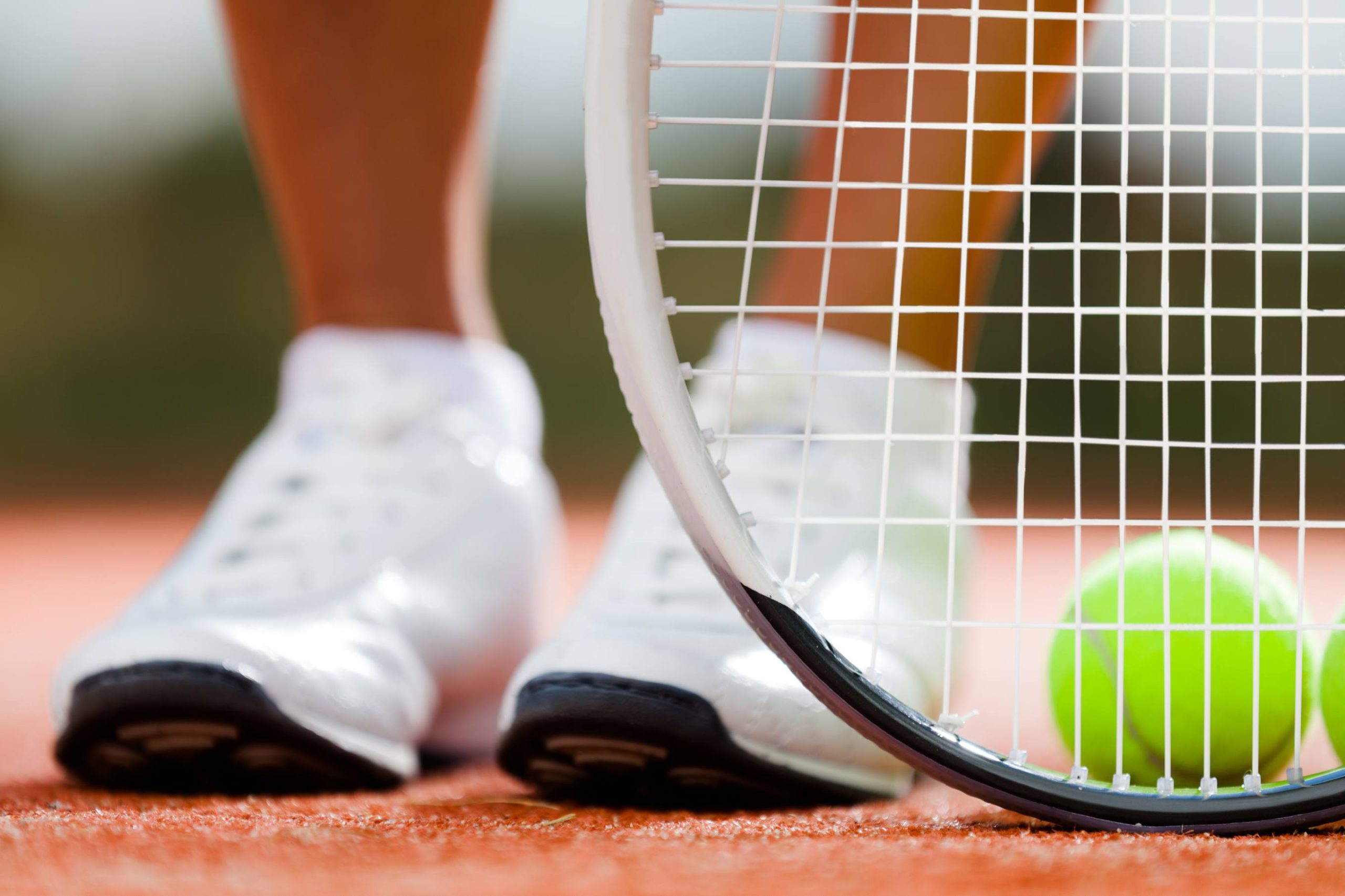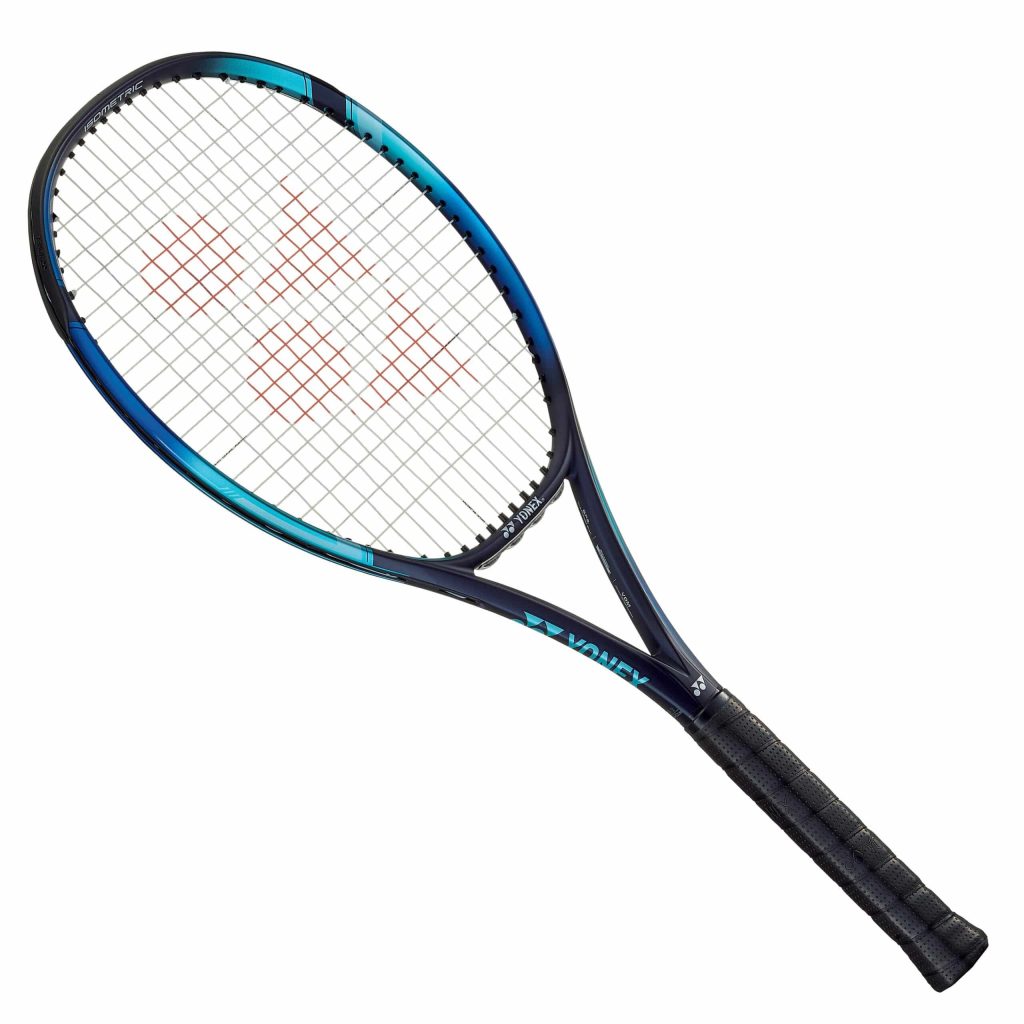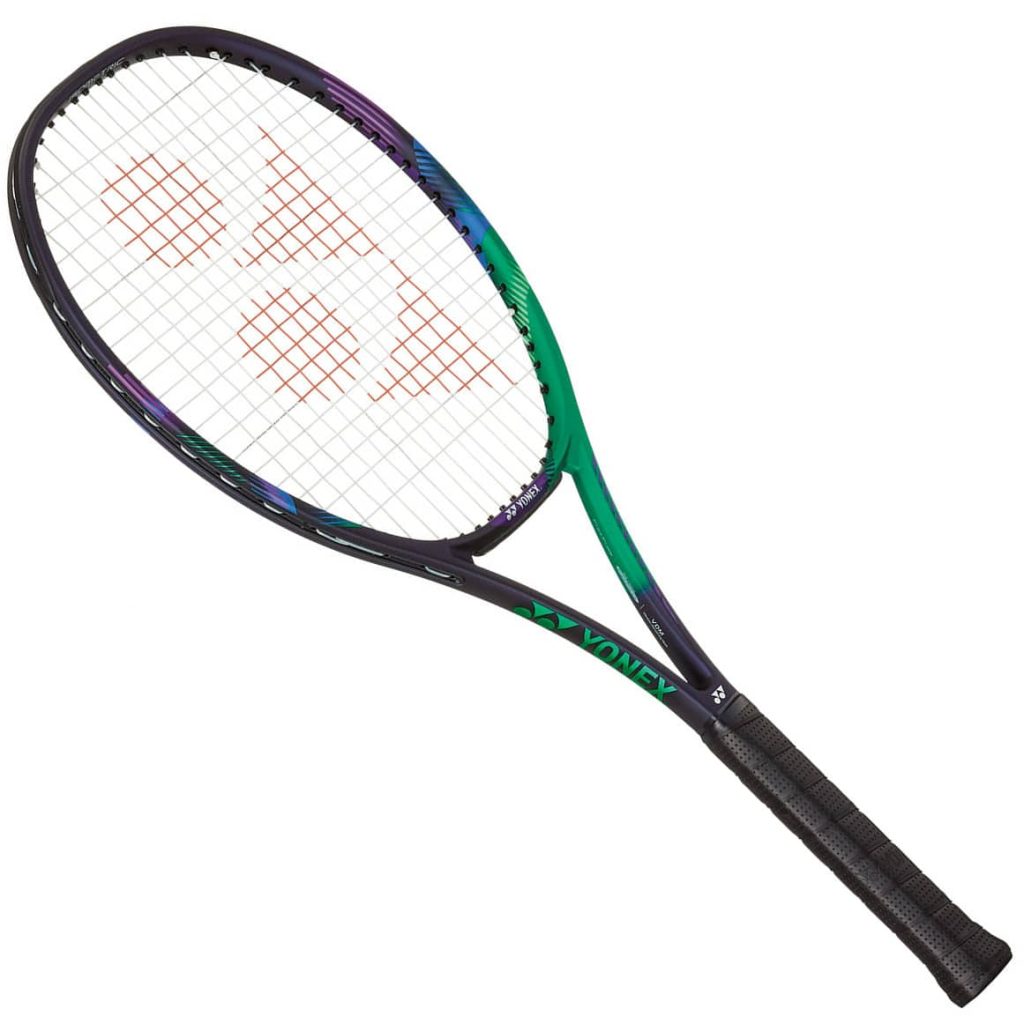
Tennis, a sport where skill and equipment go hand in hand, demands not just physical prowess but also the right gear to complement it. In the realm of tennis equipment, the racquet is a player’s most crucial ally, especially when it comes to mastering control on the court. This article, “Best Tennis Racquets for Control”, is crafted for players seeking precision and finesse in their game. We delve into the world of tennis racquets that are designed to offer superior control, helping you place your shots with accuracy and confidence. Whether you’re a seasoned player fine-tuning your game or a newcomer aiming for a controlled playstyle, this guide will navigate you through the best racquets tailored for control, ensuring your next swing is not just powerful, but also precise.
Table of Contents
- 1 Quick Answer
- 2 Our Top Picks
- 3 Tennis Racquets for Control: Reviewed
- 4 What Makes a Tennis Racquet Have More Control?
- 5 The Art of Picking a Control-Focused Tennis Racquet
- 6 Clarifying Your Objectives: Balancing Finances, Play Routine, Personal Taste, and Brand Trust
- 7 How We Chose the Best Tennis Racquets for Control
- 8 Conclusion
- 9 FAQs
Quick Answer
Name of products | Wilson Pro Staff 97 v13 | Yonex EZONE 98 | Yonex VCORE Pro 97 310 |
Product image |  |  |  |
Advantages |
|
|
|
Buy Here | |||
Rated by our team |
Our Top Picks
Wilson Pro Staff 97 v13: Best Overall
Yonex EZONE 98: Best for Women’s
Yonex VCORE Pro 97 310: Best Budget
Head Gravity Pro 2021: Best for Control and Power
Head Graphene 360+ Speed MP: Best for Control and Spin
Tennis Racquets for Control: Reviewed
Wilson Pro Staff 97 v13

Rating: 9.8*
Details:
The Pro Staff 97 v13 tennis racket celebrates the historic Pro Staff series with a design homage. It introduces the new Braid 45 construction, adjusting the double braided fibers’ angle for heightened precision, feel, and stability. Further upgrades include a denser string bed for shot consistency and a modern end cap, boosting comfort and ergonomics. Aesthetic nods to its legacy feature red and yellow pinstripes on the throat, reminiscent of past iconic series designs. Additionally, a unique exposed carbon fiber weave with a glossy finish is strategically positioned above the 3 & 9 of the frame, adding a stylish touch.
Specs:
- Skill level: High intermediate to advanced
- Weight (strung): 11.7 oz / 332 g
- Extras: Spin, feel, control
My Experience:
The Wilson Pro Staff 97 v13 is a modern iteration of the classic Pro Staff series. It offers precision, a solid feel, and increased maneuverability. With a sleek black and white design, this racket is endorsed by many professionals and is known for its performance on the court, particularly with its improved string pattern for better spin and power.
|
|
Yonex EZONE 98

Rating: 9.5*
Details:
Yonex’s latest addition to the EZONE 98 series stands out as one of the most user-friendly player’s racquets available. The 2022 model, reminiscent of the cherished 2015 DR version, offers remarkable feel, comfort, and stability despite its lightness. Although it doesn’t pack the power of heftier alternatives, its agility is notable during defensive plays, on-the-run shots, or net charges. Enhanced by the 2G NAMD SPEED in its shaft, it delivers a robust response and superior ball feedback. Yonex’s redesign of the beam boasts a thicker shaft for stability and a slender frame face for a gentler hit. The signature ISOMETRIC head shape, a Yonex hallmark, offers a forgiving feel unparalleled by traditional racquets. Its swift speed and precise targeting, coupled with its impressive contact sensation, set it apart in the market.
Specs:
- Skill level: Intermediate to advanced
- Weight (strung): 11.3 oz / 320 g
- Extras: Control, feel
My Experience:
Yonex’s EZONE 98 is famed for its blend of power, spin, and precision. Enhanced by Yonex’s Isometric head shape which increases the sweet spot, this racket delivers a powerful punch. With its Vibration Dampening Mesh (VDM) in the handle, players experience reduced shock and improved touch, making it a favorite among intermediate to advanced players.
|
|
Yonex VCORE Pro 97 310

Rating: 9.4*
Details:
A part of the VCORE series, the Yonex VCORE Pro 97 310 is tailored for advanced players seeking control and spin. The racket incorporates the Namd graphite material, offering a unique flex and fast frame snapback. This allows players to hit with heavy spin and precision. Its weight offers a nice balance between stability and maneuverability.
Specs:
- Skill level: Intermediate to advanced
- Weight (strung): 11.5 oz / 326 g
- Extras: Control, maneuverability, feel
|
|
Head Gravity Pro 2021

Rating: 9.1*
Details:
The Head Gravity Pro 2021 stands out with its distinctive flip design and is ideal for the aggressive next-gen player. This racket offers a massive sweet spot, thanks to its teardrop-shaped design. With Graphene 360+ technology, players can expect enhanced flex and clean impact feel, making it an excellent choice for players seeking control without sacrificing power.
Specs:
- Skill level: Intermediate to advanced
- Weight (strung): 11.7 oz / 332 g
- Extras: Stability, control, power
|
|
Head Graphene 360+ Speed MP

Rating: 9*
Details:
The Head Graphene 360+ Speed MP is designed for versatility, offering a blend of speed, spin, and power. Integrated with the Graphene 360+ technology, it provides improved energy transfer and enhanced flex for a better feel. The 16×19 string pattern further ensures that players can generate ample spin with every shot. It’s an ideal choice for competitive players who desire a balanced performance.
Specs:
- Skill level: High intermediate to advanced
- Weight (strung): 11.2 oz / 318 g
- Extras: Control, precision, maneuverability
|
|
What Makes a Tennis Racquet Have More Control?
Before diving deep into specific racquet reviews, it’s essential to understand the elements that bestow a tennis racquet with greater control.
String Pattern: Control Lies in the Weave
String pattern means the arrangement and count of main and cross strings in the racquet. Common configurations are 16×19, 18×19, and 18×20. A denser or “tight” string pattern, marked by higher counts, offers enhanced control and touch. Conversely, an “open” pattern leans towards power and spin. Interestingly, the majority of racquets heralded for spin tend to have a 16×19 pattern.
Frame Size: Small can be Mighty
The frame size, essentially the racquet’s face, varies, starting at 90 square inches for advanced models to about 115 square inches for novices. Players seeking precision often gravitate towards smaller frames, which minimize the trampoline effect, thereby heightening control.
Weight: Stability Meets Power
The racquet’s weight plays a pivotal role in control. Typically, weight is measured sans strings, but always ensure consistency when comparing. A weightier racquet provides more stability and, consequently, control. However, a word of caution: an overly hefty racquet can compromise your swing.
Balance: A Delicate Dance
Balance concerns the racquet’s weight distribution. At 27 inches (common length for adult racquets), the midpoint or ‘even balance’ is 13.5 inches. Beyond this, it’s “head heavy,” and below, it’s “head light.” While head-heavy racquets offer greater stability and control, it’s essential not to compromise comfort.
Beam Thickness: Slim Profiles, Max Control
The width of the racquet frame, as seen from the side, defines the beam thickness. Generally, a thicker beam augments power, while a slimmer one refines control.
Stiffness: Bend but don’t Break
Racquet flexibility, or stiffness, is scaled from 0 (flexible) to 100 (rigid). While rigid racquets deliver power and steadiness, they may lack in comfort. Players prone to tennis elbow might favor a more flexible racquet.
Length: The Power-Control Trade-off
Typically, tennis racquets are 27 inches long, though some extended versions reach 28 inches. These longer racquets boost power and spin due to added leverage, but a shorter racquet generally ensures better control.
Strings: The Hidden Control Factor
Your choice of string type and tension can drastically influence your racquet’s performance. Tighter strings optimize control by reducing the ball’s rebound, while looser strings enhance power. The tension sweet spot for most players lies between 45 and 60 lbs, influenced by string type.
The Art of Picking a Control-Focused Tennis Racquet
Understanding the intricacies of a control-oriented tennis racquet is the first step. Next, you need to tailor your choice to your skill level and playing style.
Skill Level: Power vs. Control
Your proficiency in tennis significantly influences the type of racquet that will best complement your game.
For Beginners: Power is Paramount
If you’re a novice to tennis, the focus should be on finding a racquet that offers power with ease. It’s essential to have a racquet that aids consistent ball contact, ensuring you can engage in prolonged rallies as you adapt to the sport’s demands.
Key features to prioritize:
- Head size: Opt for a larger head size, typically over 100 square inches.
- Frame weight: Aim for a lighter racquet, weighing less than 11 ounces.
- Power quotient: A racquet that aids in enhancing shot strength.
For Intermediate Players: The Middle Ground
When you’ve gained some experience on the court, you’ll be searching for a racquet that offers a blend of power and control. At this stage, precision becomes as vital as power.
Desirable attributes include:
- Head size: A medium head size, ranging between 98 and 105 square inches.
- Frame weight: A moderately weighted frame, ideally between 10.1 and 11.5 ounces.
- Control & power mix: A racquet that doesn’t lean excessively towards either aspect, ensuring versatility.
Remember, while these are general guidelines, the best racquet will always be the one that feels most comfortable in your hand and matches your unique playing style. Always consider personal comfort and preferences when making a decision.
Mastery on the Court: Advanced Players Prioritize Control
Seasoned tennis enthusiasts, having honed their skills and developed formidable strength, often lean towards racquets that amplify control rather than sheer power. This is because, with experience, players generate their own power and desire racquets that complement their precise shot placement.
Key characteristics to consider:
- Head size: Typically, a smaller head size, around 100 square inches or less, is favored.
- Frame weight: A robust frame, weighing more than 11 ounces, ensures stability during intense matches.
- Control-centric design: Prioritize racquets that are specially crafted to enhance feel and control.
It’s also worth noting that as players advance in their game, personal touch and nuances play a pivotal role. An advanced player’s racquet becomes an extension of their arm, and the connection between player and racquet is paramount. Thus, always opt for a racquet that resonates with your personal playing style and preferences.
Clarifying Your Objectives: Balancing Finances, Play Routine, Personal Taste, and Brand Trust
Embarking on the journey of acquiring a new tennis racquet requires you to introspect on your primary objectives and what you value most.
Setting a Financial Boundary
Your budget stands as a cornerstone in the decision-making process. Determining how much you’re willing to allocate can streamline your choices.
How Regular is Your Game?
Reflect on the intensity and frequency of your tennis sessions. Occasional players might not require the latest, high-end models, while avid enthusiasts might benefit from a more substantial investment.
Your Unique Touch
Every player has a distinct style and comfort zone. Make sure the racquet complements your technique, offers a comfortable grip, and even appeals to your aesthetic sense.
Brand Loyalty vs. Exploration
While many swear by specific brands due to past experiences or professional endorsements, it’s worthwhile to sometimes venture out and explore other brands, as they might present hidden gems that align with your needs.
In conclusion, finding the right racquet is a blend of self-awareness and market research. Ensure it’s a piece that feels like an extension of you on the court, rather than just another tool.
How We Chose the Best Tennis Racquets for Control
Consultation with Experts
We reached out to tennis coaches, professionals, and racquet technicians to get their insights. Their years of experience allowed them to provide valuable feedback on the control attributes of various racquets.
Player Feedback
We analyzed reviews and feedback from intermediate to advanced players, as control is a feature often sought after by those with more refined techniques.
Head Size and String Pattern
Generally, smaller head sizes and denser string patterns are associated with greater control. Racquets that feature these specifications were given priority.
Balance and Weight
Racquets with a head-light balance tend to offer better maneuverability, which can contribute to control. Additionally, heavier racquets often provide more stability, which can enhance control during ball impact.
Frame Stiffness
Racquets with a lower stiffness rating (more flexible frames) tend to offer better ball pocketing and control. We considered this when evaluating potential racquets.
Materials and Technology
Advanced materials like Graphene, Carbon Fiber, and specific racquet technologies can influence control. We delved into the tech specs of each racquet to understand their contributions.
Field Tests
A selected group of players tested the racquets in real-world scenarios. Their experiences and feedback provided practical insights into the racquets control during live play.
Brand Reputation
Established brands with a history of producing control-oriented racquets were given consideration. However, we also kept an eye out for emerging brands that showcased promising technology and innovation.
Price Range
While premium racquets often boast superior technology and materials, we also sought to identify budget-friendly options that offer good control, ensuring a range for all types of players.
Consistency and Durability
Control should not wane as the racquet ages. We considered the durability of the racquet and its ability to offer consistent control over time.
Conclusion
The quest for the best tennis racquet for control is a journey unique to each player, blending personal playstyle with the nuanced characteristics of the racquet. The options we’ve explored offer a spectrum of features catering to control, precision, and stability, essential for a game rooted in strategic shot placement. Remember, the ultimate choice should resonate with your individual needs and playing habits. A racquet that complements your style can significantly elevate your performance, turning every match into a display of skill and finesse. Embrace the journey of finding your perfect match in a racquet, knowing it’s a pivotal step in refining and mastering the art of control on the tennis court.
FAQs
Why is control important in tennis?
Control in tennis is vital because it allows players to place the ball accurately, directing shots to exploit opponents’ weaknesses or maintain strategic advantage. A player with good control can dictate the pace of the match, maneuvering the opponent around the court, and making it difficult for them to anticipate or respond effectively.
Does a heavier racquet offer better control?
Generally, a heavier racquet provides better stability and reduces the chances of the frame twisting upon ball impact, thus offering enhanced control. However, it’s essential to balance this with maneuverability. If a racquet is too heavy for a player, it may lead to reduced swing speed and potential arm discomfort.
How does string pattern affect control?
The string pattern, particularly the density of the strings, can influence control. Closed or dense string patterns tend to offer better control by providing a more consistent ball response. In contrast, open string patterns can generate more spin due to greater ball-string interaction, but might sacrifice a bit of control.
Is head size related to control?
Yes, head size can influence control. Typically, smaller head sizes offer more precision and control as they have a more concentrated sweet spot. Larger head sizes, on the other hand, provide more power and a larger sweet spot, which might be forgiving for off-center hits but may sacrifice some control.
Can beginners use control racquets?
While beginners can use control racquets, they might find them challenging initially. Control racquets often come with smaller head sizes and heavier weights, which might be less forgiving on mis-hits. Beginners typically benefit from racquets that offer more power and a larger sweet spot to help compensate for developing technique. However, it ultimately depends on individual preferences and adaptability.

I’m Heorhii Rysak, a go-to sports enthusiast and blogger. My fascination with sports began in my childhood with karate, setting the foundation for my love of physical fitness. Over the years, I’ve delved into various disciplines, including martial arts and CrossFit, and developed a passion for tennis. I bring a wealth of practical experience to my blog, where I share equipment reviews, workout plans, and fitness advice. My goal is simple: to inspire and assist you in your journey toward better health and performance.